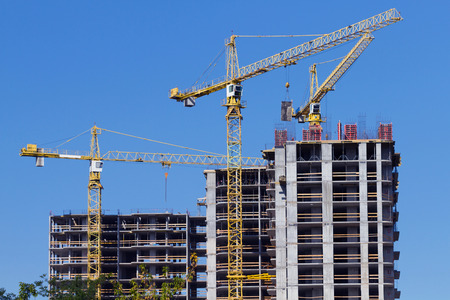Cranes Top the List of Equipment Worksite Accidents
July 12, 2017 | Category: Construction Accidents, Personal Injury | ShareThe largest pieces of equipment on Florida industrial worksites are the cranes. They are used to lift and move heavy objects. Because of their size and purpose, they usually cause more accidents than other equipment. Cranes represent a danger to workers on the worksite as well as the operator.
On Thursday, June 1, 2017, three workers at an office construction site in Miami-Dade County were injured when two cranes failed. One of the cranes was hoisting a large concrete wall which bumped into two scissor lifts knocking them over. Men working on a scaffold on the fourth floor were injured after falling 20 feet to the ground below, according to WSVN-7 News in Miami.
Earlier in 2017 a construction worker was killed and another was seriously injured when a boom lift and Metromover car in Miami-Dade County collided. A Miami-Dade county spokesperson said the Suffolk Construction boom which was working on Brightline’s Miami Central Station hit the Metromover.
 What are the primary types of crane-related deaths?
What are the primary types of crane-related deaths?
CPWR, the Center for Construction Research and Training, says the primary types of crane-related deaths are due to:
- Overhead power line electrocutions (32 percent)
Half of all electrocutions were associated with the crane boom or cable contacting an overhead power line.
- Crane collapses (21 percent)
An unstable, uneven or icy surface on which the crane was sitting accounted for 20 percent of crane collapses. Overloading the crane accounted for another 16 percent. The crane stabilizers/riggings broke in 14 percent of cases, while the crane load or boom shifted in 13 percent. Remaining causes are unknown.
- Construction worker being struck by a crane boom and/or jib (18 percent).
Almost half of these deaths (48 percent) occurred while workers were dismantling the boom. In most of these cases, the pins holding the boom sections together were removed without adequate support to prevent the sections from falling. In 12 percent, the deaths occurred while lengthening the boom. 13 percent were caused by the boom or boom cable breaking, and the remaining 27 percent of these deaths were caused while workers were loading or unloading the crane.
How can worksite crane accidents be reduced?
In February 2017 the CCAA (Crane Certification Association of American) said that:
- Crane accidents, including fatalities and serious injuries, will occur if cranes are not inspected, maintained and used properly. Overhead cranes require comprehensive, periodic inspections by experienced and qualified crane surveyors.
- Most crane accidents can be prevented by following proper safety protocol and adequately training workers on how to operate the crane safely. In fact, 90 percent of crane accidents are caused by human error, and 80 percent can be attributed to crane operators exceeding operational capacity.
In addition the Florida Crane Owners’ Council in an alliance with OSHA (Occupational Health & Safety Administration) recommends following these basic guidelines to prevent crane accidents:
- Cranes must be operated only by qualified and trained personnel.
- The crane and crane controls must be inspected by a designated competent person before use.
- Cranes must be on a firm, stable surface and must be level.
- During crane assembly and disassembly do not unlock or remove pins unless sections are blocked, secure and stable.
- Fully extend outriggers. Barricade all accessible areas inside the crane’s swing radius.
- Watch for overhead electric power lines. Maintain at least a 10-foot safe working clearance from all power lines.
- Inspect all rigging prior to use. Do not wrap hoist lines around the load.
- Be sure to use the correct load chart for the crane’s configuration and setup.
- Do not exceed the load chart capacity while making lifts.
- Raise a load a few inches, hold, verify capacity and balance, and test the brake system before delivering load.
- Do not move loads over workers.
- Be sure to follow signals, and the manufacturer’s instructions, while operating a crane.
“Florida law gives overall responsibility for construction site safety to the general contractor and subcontractors. They, and others, may be held liable for any accidents or injuries which occur on worksites. It is important to have an experienced Fort Myers personal injury lawyer investigate worksite accidents,” said Randall Spivey of Spivey Law Firm, Personal Injury Attorneys, P.A.
Fort Myers Personal Injury Attorney, Randall L. Spivey is a Board Certified Civil Trial Attorney – the highest recognition for competence bestowed by the Florida Bar and a distinction earned by just 1 percent of Florida attorneys. He has handled over 2,000 personal injury and wrongful death cases throughout Florida. For a free and confidential consultation to discuss your legal rights, contact the Spivey Law Firm, Personal Injury Attorneys, P.A., in Lee County at 239. 337.7483 or toll free at 1.888.477.4839, or by email to Randall@SpiveyLaw.com. Visit SpiveyLaw.com for more information. You can contact Spivey Law Firm, Personal Injury Attorneys, P.A. in Charlotte County at 941.764.7748 and in Collier County 239.793.7748.

